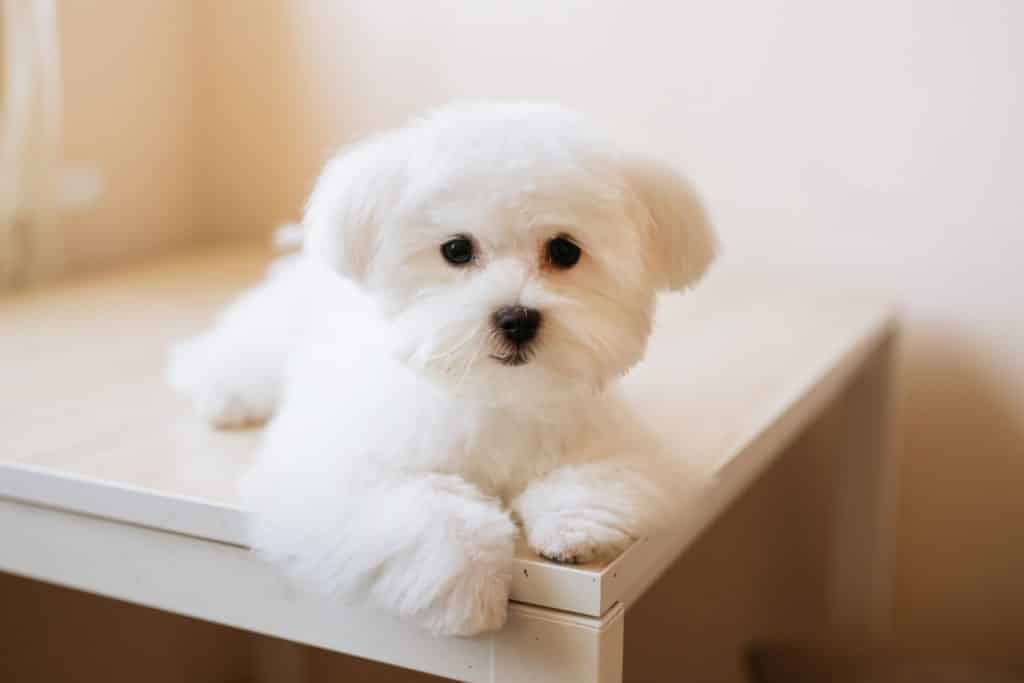
Coat length is not a parameter for most pet-loving humans, but few of us only want to pet the small dog breeds with long hair. They are fluffier, cute, and more human-friendly. So, if you are an individual who considers coat length as a huge consideration, then this article will learn you which small breeds have long hair. It also helps you to find aright small dog breed with long hair while looking into their temperament.
Following is a comprehensive list with pictures of long coat small dog breeds; we also discuss why it’s necessary to brush your long-haired dog regularly? And also the pros and cons of long fur, plus ideas to groom them:
- Shih Tzu
- Havanese
- Pomeranian
- Yorkshire Terrier
- Lhasa Apso
- English Toy Spaniel
- Skye Terrier
- Pekingese
- Löwchen (Little Lion Dog)
- Maltese
- Papillon
- Japanese Chin
- Shetland Sheepdog
- Japanese Spitz
- Puli
- American Eskimo Dog
- Bolognese
The personalities of dogs included in our list vary widely as these breeds originated in different countries; hence their grooming and care needs also vary.
Dogs are innately social and human-friendly. This cuteness hits the highlands when you see the toy dog playing tricks and preceding fun. Here, we have elaborately discussed the top small breeds. Stay with us!
1. Shih Tzu
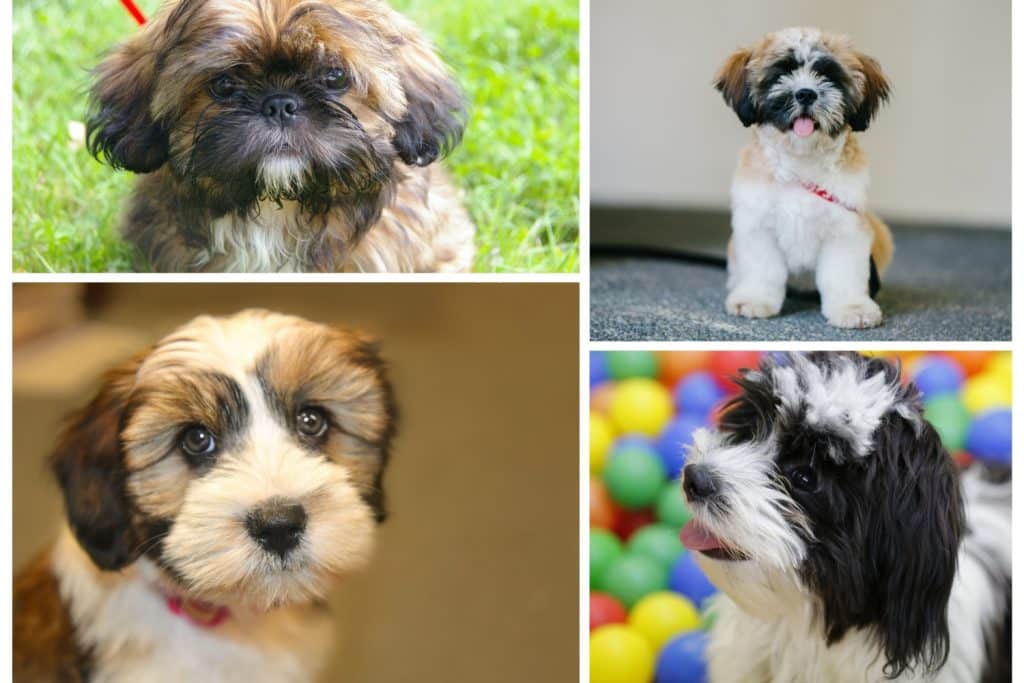
Shih Tzu is developed for the sole purpose of being a comrade; this trait makes them loyal and affectionate house dogs. Originating from China, Shih Tzu borrowed the name from ‘Lion Dog.’ The tiny and glamorous dog is not a hunting dog at all.
With deep eyes, long hair, and mini stature, these dogs are pretty to the bone. The average height is just over 10 inches. The notable characteristics are the drop ears, curled over tail, and under-bite. The fur touches the floor. At the same time, the color varies from dog to dog.
Just like a genuine family pet, Shih Tzu is well-mannered and tolerant. The playful dog can calm down to lie on the lap in an instant. A persistent follower, Shih Tzu possesses immense love and cannot be bred to hunt or guard.
2. Havanese
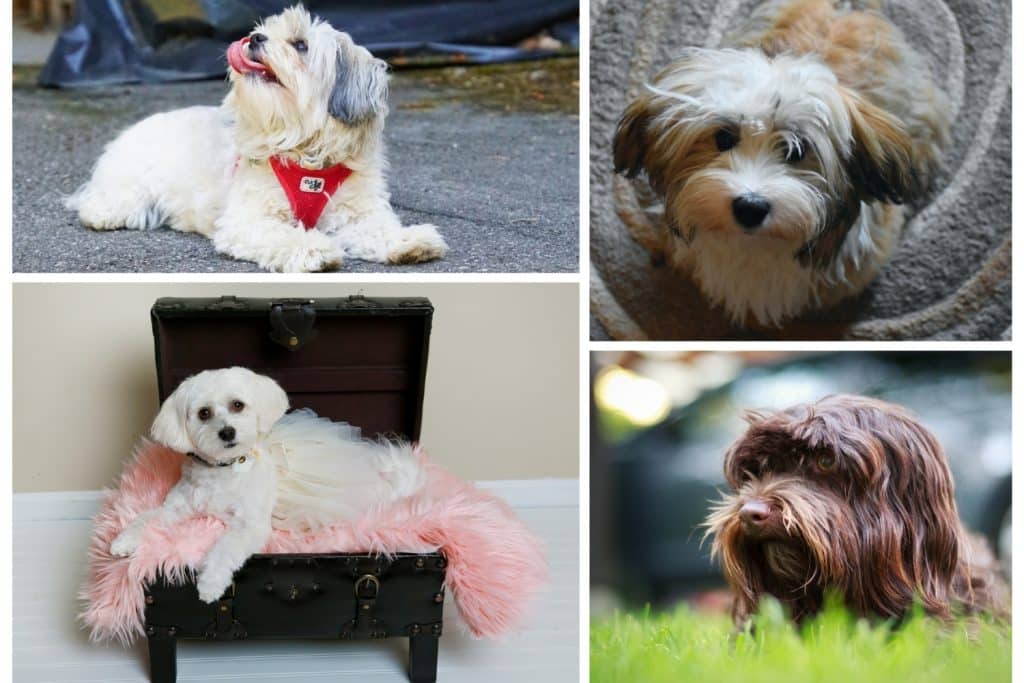
Havanese is one of the energetic and sturdiest dogs of all time, viable for little plays at home. It’s a loyal dog that infuses ultimate love and fun.
The small dogs weigh only seven to 14 pounds. Moreover, the height ranges from 8.5 to 11.5 inches by the shoulder. The body is longer than tall, equipped with drop ears and the tail curled over the back. The coat could be wavy or straight. Because of double-coated fur, Havanese is also known as “Havana Silk Dog.” The color varies from blue, black, silver, cream, champagne, chocolate, to any tricolor combination.
Havanese are people-oriented and can often be spotted snuggling in laps. However, they do not do well alone. The boredom is vented through destructive chewing and incessant barking. Although being humble with every sentient being, Havanese can also be conservative with strangers. Socialization is its main trait that builds up outgoing temperament and somewhat timidity. In comparison, the most problematic issue with Havanese is frequent housebreaking.
3. Pomeranian
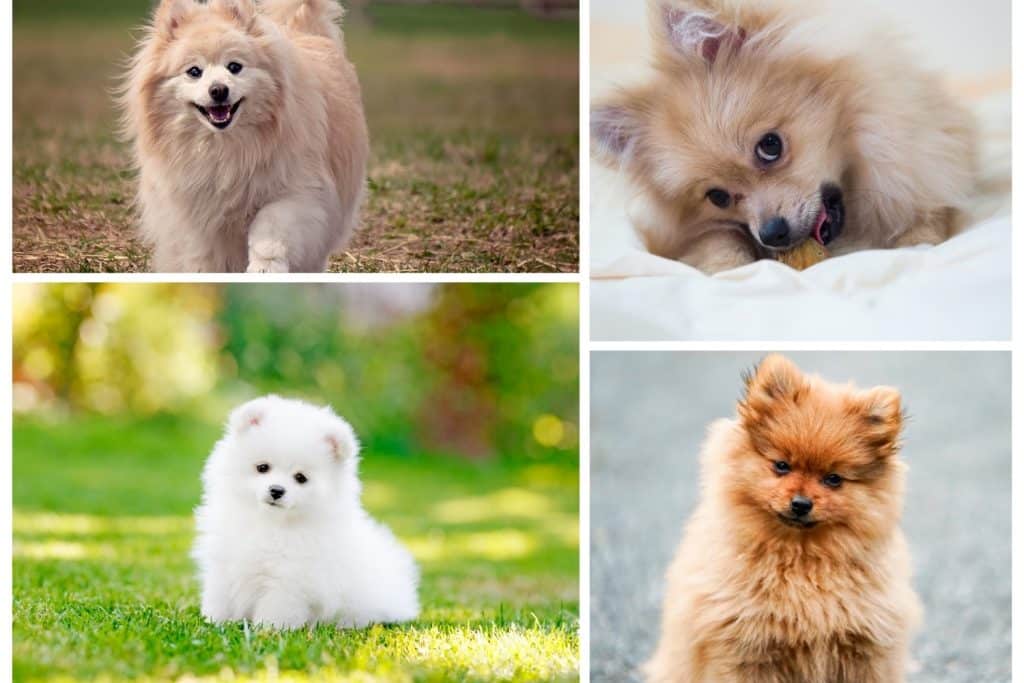
The Pomeranian holds up an ambivalent disposition, needs daily exercise, and has the will and dare to challenge the large-sized dogs. This dog has been the favorite of Queen Victoria of Germany. The finicky eaters do not end with obesity. They also have a nickname – Pom Pom.
Easily recognized by the fluffy double coat, foxy face, and prick ears. The body is square, and the tail curls up. Moreover, the head is rounded with an apparent muzzle. Pomeranians come up in a diverse color range, starting from black to white to shades to sable.
Pomeranians are friendly by nature. Belonging to an independent streak, Pomeranians become more amenable by age. These are attentive and resort to excessive barking upon the sensation of any lurking danger.
4. Yorkshire Terriers
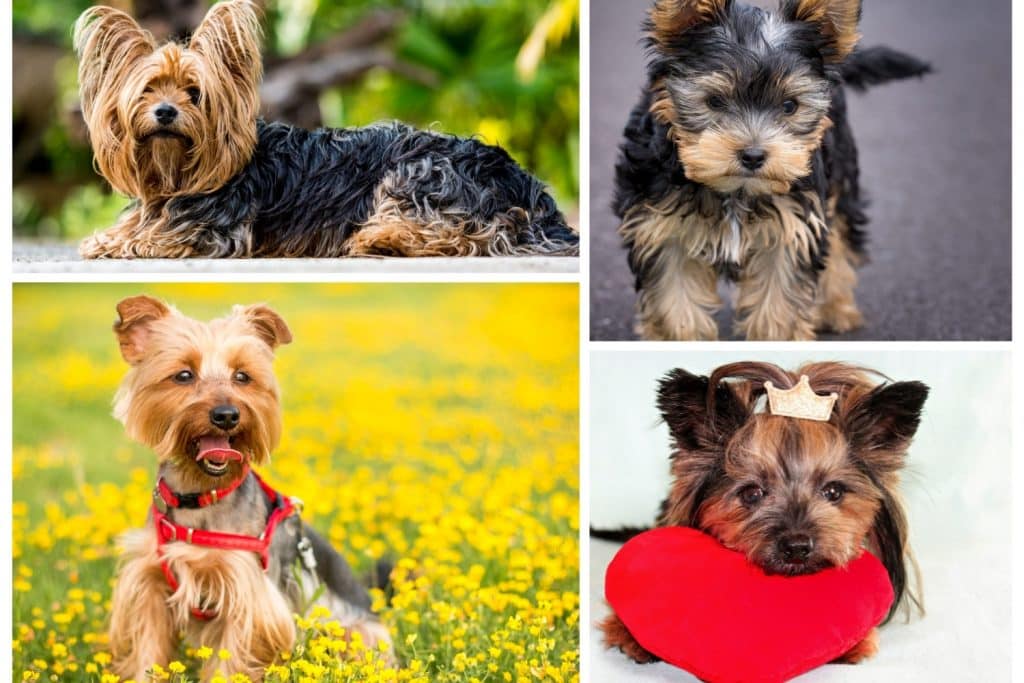
Petite in size but a giant in personality, the Yorkshire terrier is a loving companion. Thanks to its gracious looks and viability to apartment living, the “Yorkie” is the most popular breed in the USA. Nevertheless, the sometimes yappy instinct might tease the neighbors. This breed does not like the chill at all. Yorkies were first registered in the U.K.’s Kennel Club register in 1874.
Yorkshire Terrier, aka Yorkie, is perhaps the most elegant representative of the dog world because of its long silky coat and perky topknot. However, they are only 8-9 inches at the shoulder and weigh around seven pounds; less weight, more preferable.
Mainly affectionate, Yorkies are suspicious of strangers and bark at them. They could also be offensive towards the storage dogs. Squirrels are their sworn enemy. On the flip side, Yorkshire Terriers are very soft towards their family friends. Like other pet dogs, Yorkies also love socialization and exposure to sounds, people, sights, and experiences.
5. Lhasa Apso
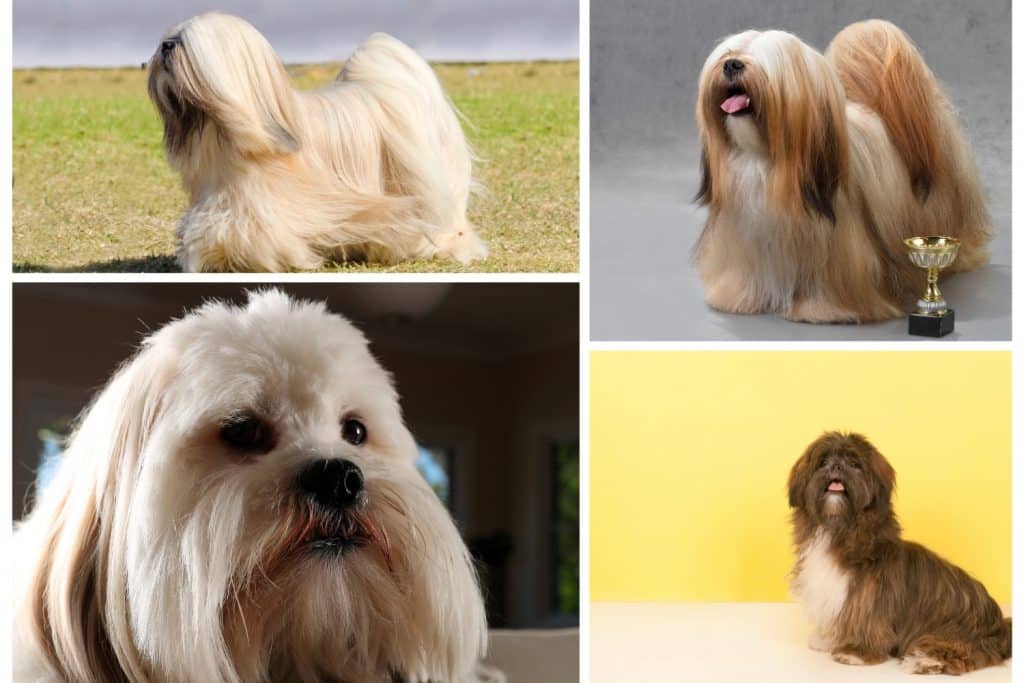
Considered as easy-keepers, the excellent comrade Lhasa Apso is bred as a guard dog considering its aloofness, stubbornness, and loud barking. These are long-lived, the oldest one attaining 29 years of age.
Lhasa Apso weighs around 13-15 lbs, reaching heights around 9-11 inches. These dogs dress up in full show coats. Moreover, the head is round, with all the ears and hair hanging down gracefully. The eyes and shortened muzzle are slightly cropped and hidden by long fur. Virtually all color shades are acceptable.
The Tibetan Lhasa Apso is both a companion and guard dog. It remains aloof with strangers and affectionate with people. The dog needs to be coddled; otherwise, be ready for sharp alarm barking. Although not friendly with other dogs, Lhasa Apso needs a fair amount of socialization with human friends.
6. English Toy Spaniel
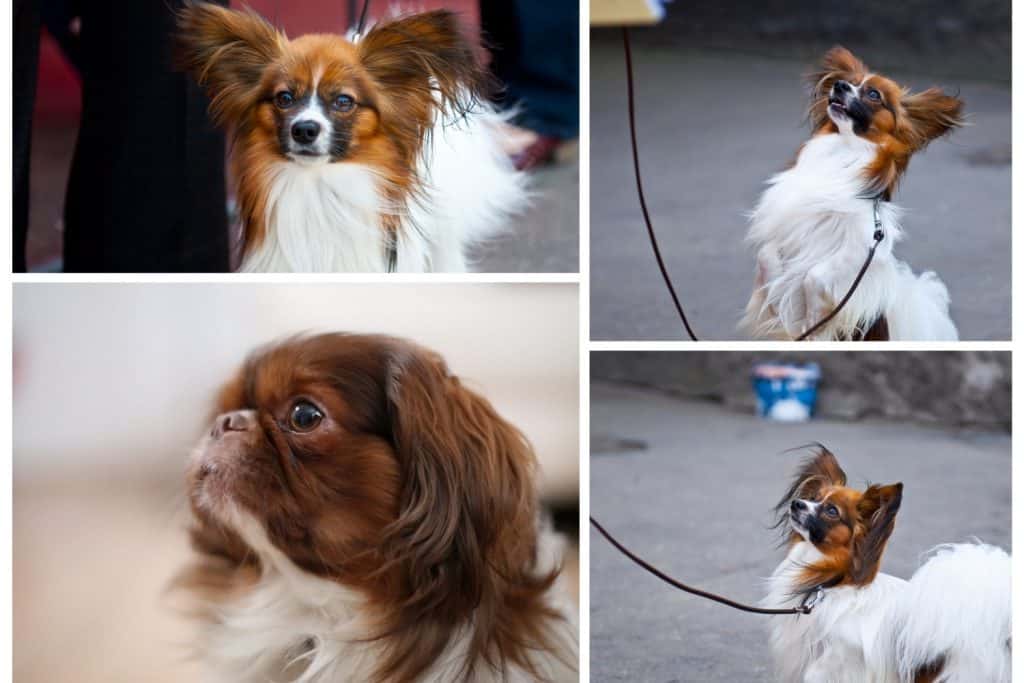
Named after King Charles, English Toy Spaniel is reclusive and quieter than the Cavalier siblings. However, this toy dog is affectionate, bright, and amenable. Usually a restful dog, it turns out like a lion if it seems the owner is in danger.
Charlies are:
- The square-bodied, compact, domed head.
- Short face.
- Having dark eyes.
- Grinder ears.
- A flowing silk coat.
The tail is 2-4 inches long with elegant feathering. Unfortunately, English Toy Spaniels attain a height of only 10-11 inches.
English Toy Spaniel tends to be a single entity rather than “fellow well well met.” This breed only needs a casual stroll but prefers to remain inside as they don’t endure harsh weather. These are good friends for children, but boisterous behavior could overwhelm them. For fun, English Toy Spaniel chase butterflies and birds.
7. Skye Terrier
Created on the Isle of Skye, the sole purpose of Skye Terriers was to rid games of versions whose presence was anathema for livestock. Skye took this challenge on the chin and vanquished vermin and company aptly. Over time, Skye Terrier got famous as an apartment dog thanks to its long body, lush coat, feathered prick, and drop ears.
The average height for males is 10 inches while 9.5 inches for females. Usually, a Skye Terrier weighs 30 to 40 pounds. The astute dog is adorned with a lush feather coat and drop ears.
Skye Terrier has a mind of its own. It is sensitive and responds only to a mild tone. Skye can only be trained through positive reinforcement involving play, praise, food, and rewards. Scolding has serious adverse effects. Terrier title spurs it to take on the other dogs regardless of size. Skye Terriers should not be left alone with furry pets like hamsters, gerbils, or rabbits. It will be perceived as lunch. Skye is an excellent watchdog, adaptable, and can be kept in condos or apartments on the positive side. Nevertheless, bear in mind it believes in a give-and-take relationship.
8. Pekingese
Pekingese dogs are bred for decades as a cherished partner of the imperials of China. Today, these are not exclusive – open for all. Pekingese dogs are not recommended for families with toddlers. They don’t hesitate to exercise the right of defense against poking or grabbing.
Pekingese is a member of a toy group, ranging from 6-9 inches. Pekes weigh from six pounds for the little people to 14 pounds at the heaviest. Long fur Pekingese are long-bodied low dogs with bowed limbs.
Being an imperial pet, Pekingese is imbibed with a self-centric attitude. Round brown eyes, tail over the back, and mane of hair; he swaggers with full awareness of who his ancestors were. Training is difficult as Pekes do not respond to discipline. Pekingese bark when strangers approach.
9. Lowchen
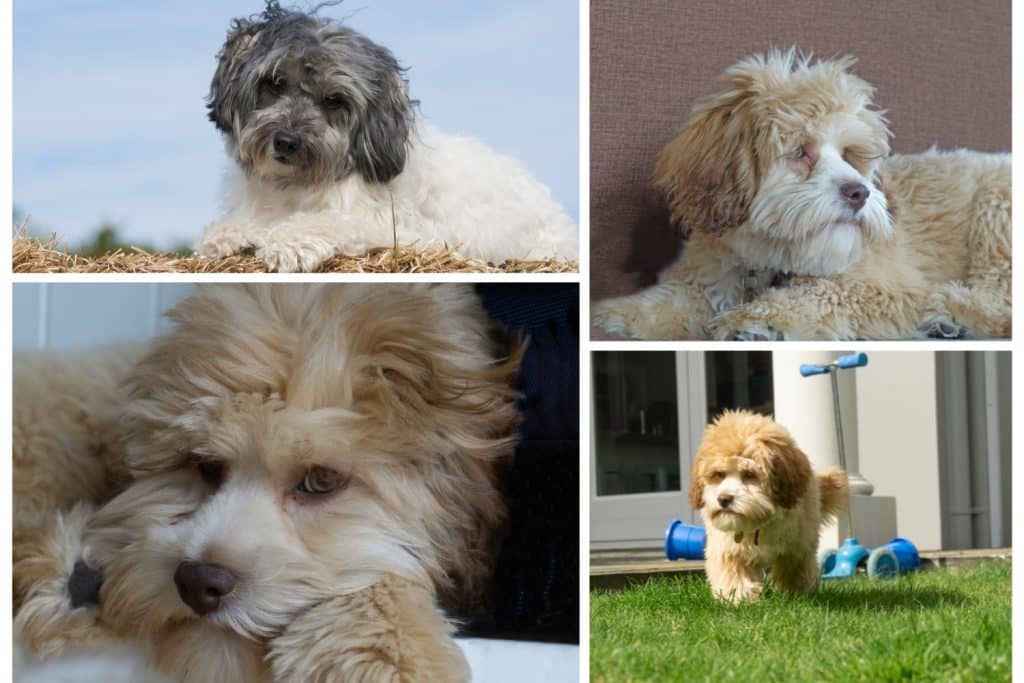
Lowchen translates to “lion dog,” but this fierce demeanor is just restricted to the looks. Essentially, Lowchens are gentle and playful.
Lowchen is longer than taller. The average height ranges from 12-14 inches; while, the weight is in the bracket of 9-18 pounds. The fur is soft, dense, and long. Lowchen could be clipped or just left in a natural coat. The tail is also trimmed, having a plume at the tip. The Lowchen breed is a mild shedder.
Lowchen is loving and affectionate. He can only endure the in-house life; leaving alone in the kennel would lead to ill health. Some Lowchen dogs develop the habit of digging, and this disposition is difficult to break. Overall, Lowchen is a loving, caring, friendly, and intelligent dog.
10. Maltese
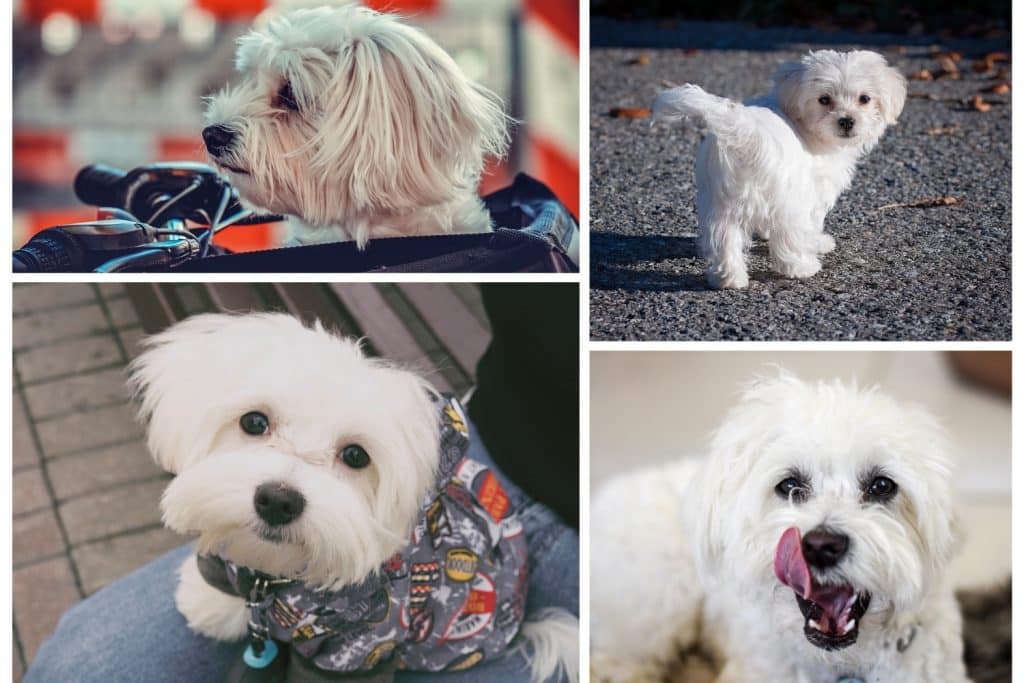
Maltese was created as a household pet for cultured and affluent families on the Mediterranean island of Malta. Maltese are the best dogs for playing hide-and-seek and search-the-hidden-toy games. The motile and curious soul does not need rigorous exercise but a little stroll around the fence. Larger dogs may deem him as a feast, so a Maltese should be fenced or leashed. Maltese are simply confident but not aggressive or possessive.
The miniature dog weighs from 4-6 pounds. The body is compact, having the shoulder blades sloping. The back is level and the ribs sprung. Furthermore, the tufted tail is carried over the back.
The fur is feathered and fluffy. The head is well proportioned with a slightly rounded skull.
Furthermore, the drop ears are low and also featured. Dark eyes, black nose, and tapered muzzle extend the beauty. Finally, the silky coat gives Maltese a genuinely ornamental appearance. In pure white color, Maltese moves in a buoyant gait.
Maltese possesses all the gentle traits such as trusting, responsive, intelligent, and affectionate. These are playful and win hearts through various tricks. On the other hand, Maltese are always snappy with boisterous children. The petite physique belies its daring presence. Highly alert, the Maltese in ok to a flurry of yapping while sensing storage noises.
11. Papillon
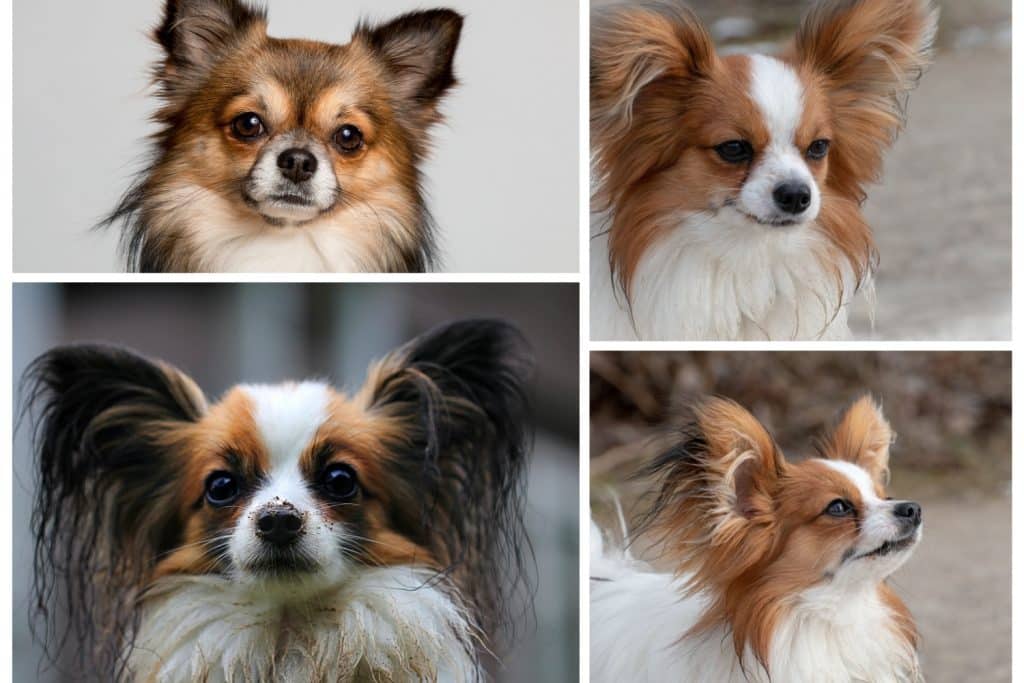
Papillon shares the top slot with the Toy poodle as the most lively toy breed. However, the athletic Papillon is the top pick for the agility trainers. These playful souls are light-footed indoors and outdoors. Nevertheless, it does not suit owing to its inquisitive nature if you’re looking for a calm lapdog.
Papillon is the cousin of the spaniel. It derives its name from the butterfly shape and hair on the ears. The dainty papillon has a plumed tail, silky coat, and different hues on the white base. The average height is 20-28 cm.
Excessive barking is a common trait of this toy breed. However, it does not mean that Papillon is angry. Socialization is essential as these are friendly with strangers despite often being standoffish. Papillon is also touch-sensitive and can be annoyed by the mischief of children. However, Papillon’s temperament remains calm in an adult-only house.
12. Japanese Chin
Japanese Chin hails from Asia and has been the companion of Sino-Japanese imperials. The mild-mannered and dainty dog adapts to flat-dwelling with ease. Japanese Chin has an innate habit of climbing; you would find it atop unusual places.
The sturdily built Japanese Chin has a distinctive demeanor. The shoulder-to-shoulder height ranges from 8-11 inches. In comparison, the weight bracket is 4-9 pounds. The abundant coat is silky to touch. The other distinct features are thick mane, feathered back, legs, ear, and plumed tail.
The temperament of the Japanese Chin portends its service to the royals. It is a triumphant and intelligent dog, talkative but not barky. Japanese people believe that this dog ‘sings’ upon the arrival of guest-cum-strangers. Separation anxiety is evident.
13. Shetland Sheepdog
The Shetland Sheepdog is known for its vigilance for farmers in the Shetland island off Scotland.
Hungry birds and sheep remain out of limits. These also serve as herding dogs. Of late, Shelties are brilliant family companions and a star in dog sports.
The Shelties range between 13-16 inches tall at the shoulder, weighing about 22-35 pounds. The thick coat, along with the wedge-shaped head, small stature, erect ears, and deep-chested torso, gives Shetland Sheepdog a pure miniature resemblance to rough-coated Collie.
As a guard dog, the miniature Sheltie remains reserved with strangers but steer clear of timid dogs. Like other dogs, Shetland Sheepdogs need early socialization and exposure to experiences, sounds, sights, and people.
14. Japanese Spitz
Japanese Spitz is a relatively recent and rare human companion breed. These little minions are not content to sit and watch family fun; they love to be part of the drama.
The small breed has slanted oval eyes over a tapering muzzle with black lips and nose. Ears are small, and the face is wedged-shaped. The pure white coat has thick under-layers; while, the hairy tail curls over the back. Japanese Spitz also has feathers on hind legs, forelegs, and paws. The average height is 30-38 cm.
The Japanese Spitz is playful and intelligent. It should be treated as a family member; otherwise, depression will overshadow it. Upon sensing strangers, Spitz barks immediately. Japanese Spitz should be given obedience training since early childhood. Otherwise, it might be a bit rogue.
15. Puli
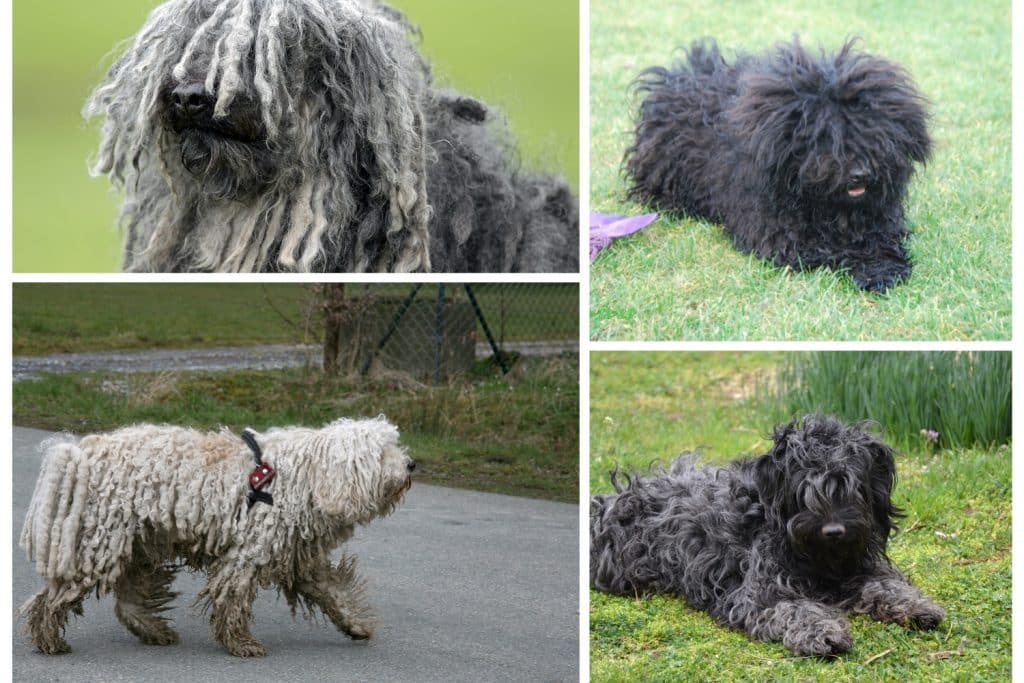
The Puli (plural: Pulik) is an ancient Hungarian breed. Considered the descendant of the Tibetan Terrier, it was brought to Hungary by nomadic tribes. Puli is an affectionate, small size dog that could adapt itself from rough terrains to condo life.
The small-medium Puli has a unique appearance. His tail is highly curled over the coat. Thanks to the very long fur coat, it is difficult to guess whether he is coming or going; this hilarious scenario earned him the name, pull-me push-me.
The outer coat is curly or wavy but not silky. Another positive aspect of the solid color coat is being hypoallergenic as it does not shed. The weight of the Puli heavily depends upon the skin, as a single mature coat could weigh 5-7 pounds. The average height is just 16-18 inches.
The self-possessed, intelligent, and manipulative dog is dedicated to human kith and kin. Bred to be the only companion of a shepherd within thick forests, Puli is a reliable dog and bestowed with a good sense of humor and alarming disposition. However, this watchdog does not bark inappropriately.
16. Bolognese
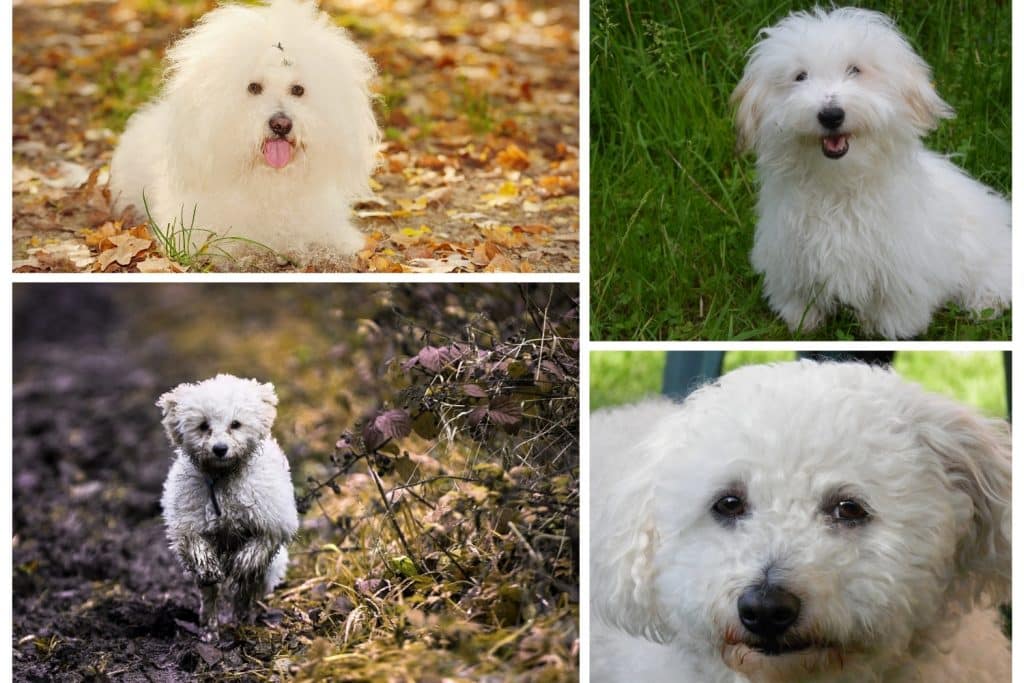
Curious and comical, Bolognese loves the people’s company no matter whoever they are; strangers, children, or adults; this white fluff is familiar to all. The full name of Bolognese is Bichon Bolognese, mentioning its city of origin in Italy. Bolognese is tough to train as it knows a variety of ways to dodge and manipulate.
The small size Bolognese ranges from 9-12.5 inches, while the weight bracket is 8-14. Males are slightly larger than females. These petite dogs are, on the other hand, muscular and stocky. Moreover, the head is small, but the muzzle is comparatively large, black, and square.
Giving a lot of love to the Bolognese would spoil it. This can be a brilliant family pet for adult-only households as children can be injured by unruly behavior. This dog loves children indiscriminately, and both can become fast friends if they play under adult supervision. The temperament of this dog is soft and amenable.
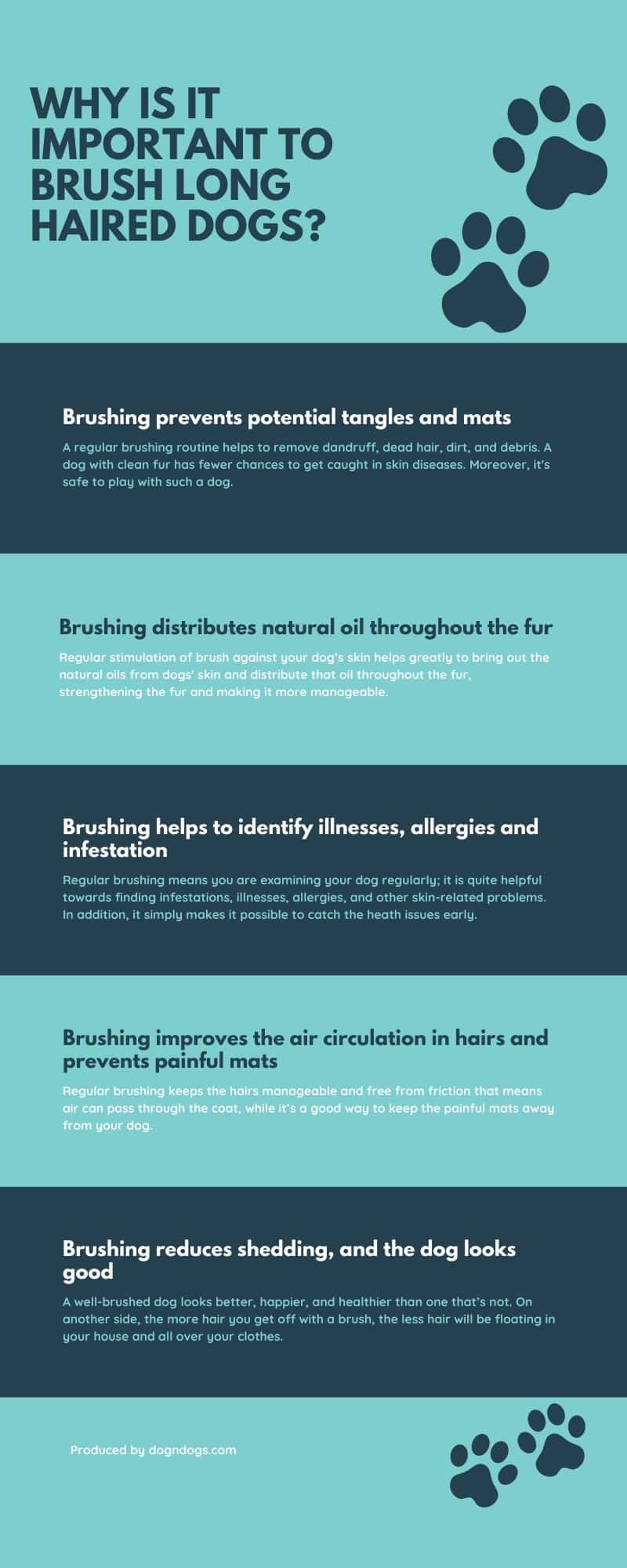
5 Disadvantage of Long Fur
- Long Fur Slow Down Dogs: Think about dog’s behavior; they always love to be playful and long fur makes them slow as they heat up, so they cannot set the pace.
- Fur Does Not Insulate: Many believe that long fur insulates the dogs and helpful in keeping them cool, but this is not the case. The thick and long coats keep the heat inside, which results in increased body temperature. So, the fur is actually making the dog warmer and warmer.
- Grooming is Time Consuming: in summer long, haired dogs smell sooner than the short-haired dogs, maybe due to their body being unable to secrete needed oils. It would help if you groomed them often, and usually, it involves bathing and trimming. While brushing is required daily.
- Shedding: this is the biggest disadvantage of having a long-haired dog, and it may knock you every day when you find the hairs of your dog here and there in your house. But you can greatly limit the problem while dedicating only five minutes to brushing your pet. On the other side high-quality feed also contribute to reducing shedding.
- Skin and Ear Infections: Small dog breeds with long hair are more prone to skin and ear infections, especially when they are not properly groomed, and it happened due to yeast infection. Keep an eye on the signs of infections can help to avoid hefty medical bills.
Tips to Pet Small Dog Breeds with Long Hair
- Consider Pouring Water: especially during their playing hours in summer. Just imagine what it feels like to wear a coat in summer; pouring water on the neck and belly makes them comfortable. When you are out there was a walk with your small long-haired dog, always take water with you.
- Trim Hair in Summer: during the hot months, it can put your dog’s health at risk, so trim the hairs in hot summer even if you have mainly indoor long hair small dog.
- Brush Them Often: detangling brush helps a lot to keep the fur manageable and free from parasites. Select a brush that can reach their topcoat to remove loose hairs and matting in the undercoat. A brush with light bristles can do the trick.
- Bath them Regularly: detangling shampoos do a great job of making the fur smooth and brushable; bathing is a significant part and should be done as often as a dog’s skin requires.
- Use A Grooming Service: it might be an overwhelming experience to groom your long-haired dog; instead of ignoring and putting your dog’s health at stake hire a grooming service, or take your pet to any grooming center.
Hold the Clippers
On one side, multiple layers can increase your dog’s body temperature and create strange smells and may invite further problems like ear and skin infections. While reading all this, you might think to trim all the hair and put a full stop to all of these problems.
While on the other side these natural layers of hairs give the dog comfort in summers and also provide health benefits in hot summers like in summer it becomes a protection against sunburn and skin cancer.
So, the facts may frighten you, but it is always ok to give your dog long hair in winter and trim their hair to make them more manageable in summers.
We advise not to shave down your dog’s hair to the skin; always cut outer layers with scissors. In case you decide not to trim your dog’s fur, then it’s ok. The long coat dogs naturally shed a lot, and they will have a lighter coat in summer; you need to bathe and brush them regularly. Also, a clean coat allows for better air circulation.
FAQ’s
Wrap Up
All small dog breeds with long hair are not worthy to pet as domestic dogs because many of them are prone to allergies, especially the double-coated ones. A dog who shed a lot is also included in this list. Finally, there are dogs with multilayer hairs that need cut at least two times a year. These loving furballs can carry dander and allergen triggers, which may threaten two paw’s family members.
But yes, there are small dog breeds with long hair which are easy to pet and less prone to allergies. These breeds give your pause regarding coat maintenance.
